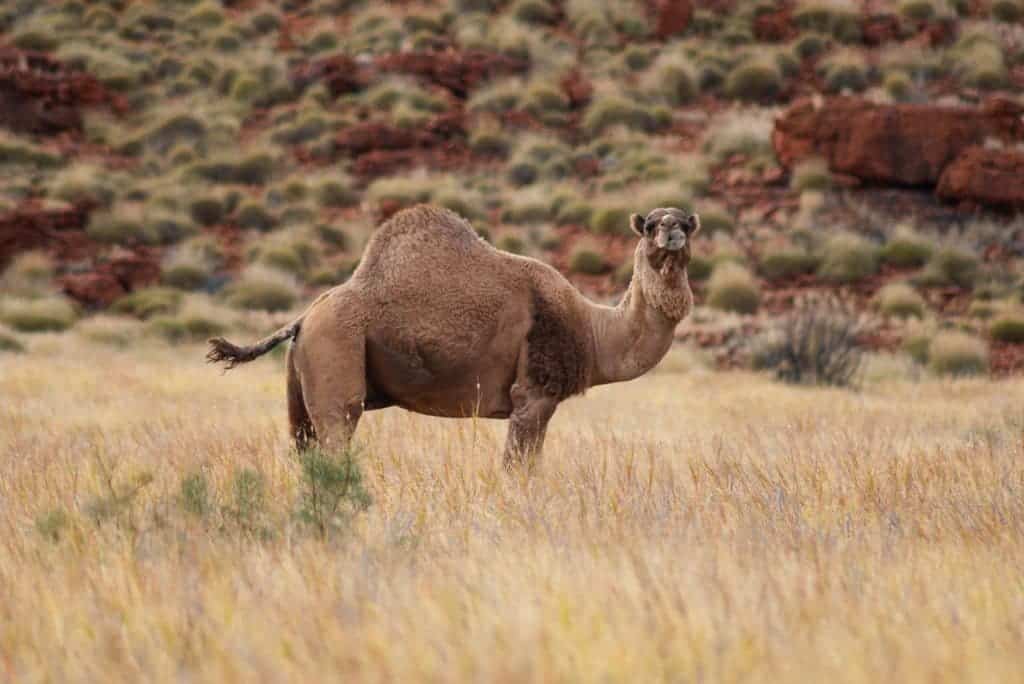The camels are reportedly being shot because they are tormenting remote communities in their search for water.
The cull, Australian officials say, will be carried out “in accordance with the highest standards of animal welfare”.

Shooting camels
In a story that seems almost too surreal to believe, the Australian government and indigenous communities have agreed to kill approximately ten thousand camels because they are drinking too much water. The initiative, which is set to happen in the state of South Australia, will be the first major cull of feral animals in the area. The plan was received with mixed responses, although most communities were in favor of the cull.
However, local government (APY) said that the economic, natural, and cultural advantages brought by killing the camels outweigh the downsides, which include a spiritual conflict for some indigenous groups.
“The dire situation is compounded by dry conditions, animal welfare issues, threats to communities, scarce water supplies, health and environmental impacts, the destruction of country, loss of food supplies and endangerment of travelers on the Stuart Highway and across the APY Lands. Given ongoing dry conditions and the large camel congregations threatening all of the main APY communities and infrastructure, immediate camel control is needed,” said Richard King, APY’s general manager. King added that the number of culled camels might be lower than 10,000, but will likely measure in the thousands.
While camels can have a negative environmental impact, it’s the impact on communities that motivated this decision. Camels can smell water from up to 5 km away, and they are attracted to taps, pumps, toilets, and even air conditioners. They tend to stay away from larger settlements and cities in general, but don’t always shy away from more isolated communities, which are often aboriginal.
Groups have started hunting camels and consuming their meat, but this has not proved sufficient in limiting their numbers, officials add.
“For many years traditional owners in the west of the APY Lands have mustered feral camels for sale, but this has been unable to manage the scale and number of camels that congregate in dry conditions,” a spokesperson for the SA Department of Environment and Water told news.com.au.
The issue is amplified by Australia’s current heat and drought situation. The drought has been ongoing since 2017, and is also a factor in the country’s ongoing devastating bushfires.
This is also a climate emergency — climate heating has been shown time and time again to accentuate drought, and researchers have predicted these effects decades ago.
Feral camels
Camels are not native to Australia. They were brought in the 1860s, mostly by Afghan cameleers and expeditioners. Camels were brought to Australia because they were thought to be good transport animals in dry, hot environments that were unsuitable for horses. They played an important role in the early development of modern Australia but were quickly discarded at the start of the 20th century as motorized vehicles became more common.
Most cameleers abandoned or slaughtered their camels — but there were ones that managed to survive and thrive. This was an unexpected boon for some aboriginal groups, which quickly learned how to use and incorporate them into trading routes. Camels became a lifeblood for some communities, as in parallel, a feral population continued to grow. As a result, although not originally from Australia, camels have an almost spiritual role in some indigenous groups, regularly appearing as a motif in Indigenous Australian art.
However, the feral population has grown dramatically. Although they do not pose as much of an environmental threat as other animals brought into Australia, their numbers have grown dramatically. As early expedition groups successfully guessed, camels are well adapted to the Australian environment — perhaps too well, if you’d ask the Australian government.
By 2008, it was feared that Central Australia’s feral camel population had grown to about one million, with the potential of doubling every 10 years. As a result, an AU$19 million management program was set into place, culminating with the largest camel cull in history. Hundreds of thousands of animals were killed, and the feral population was reduced to about 300,000 individuals.
It’s also important to note that while the damage done by camels is significant, it pales in comparison to that done by intensive agriculture — especially animal agriculture. Possibly Australia’s biggest environmental problem, which cascades into many other issues, is land degradation, an issue mostly caused by clearance of land for agriculture and overgrazing by sheep.
No doubt, camels are invasive species. No doubt, they can cause problems to both the environment and communities. Yet somehow, the idea of shooting animals from helicopters and claiming this is in accordance with welfare standards convinces few people. The response from the international community has been quick and sharp — but then again, it’s not the international community that has to deal with the camels.
In between climate change, invasive species, and agriculture, the effect of modern humans in Australia has been devastating. As it so often happened in the past, and will no doubt continue to happen in the future, the solutions for these environmental disasters are not yet in sight.


